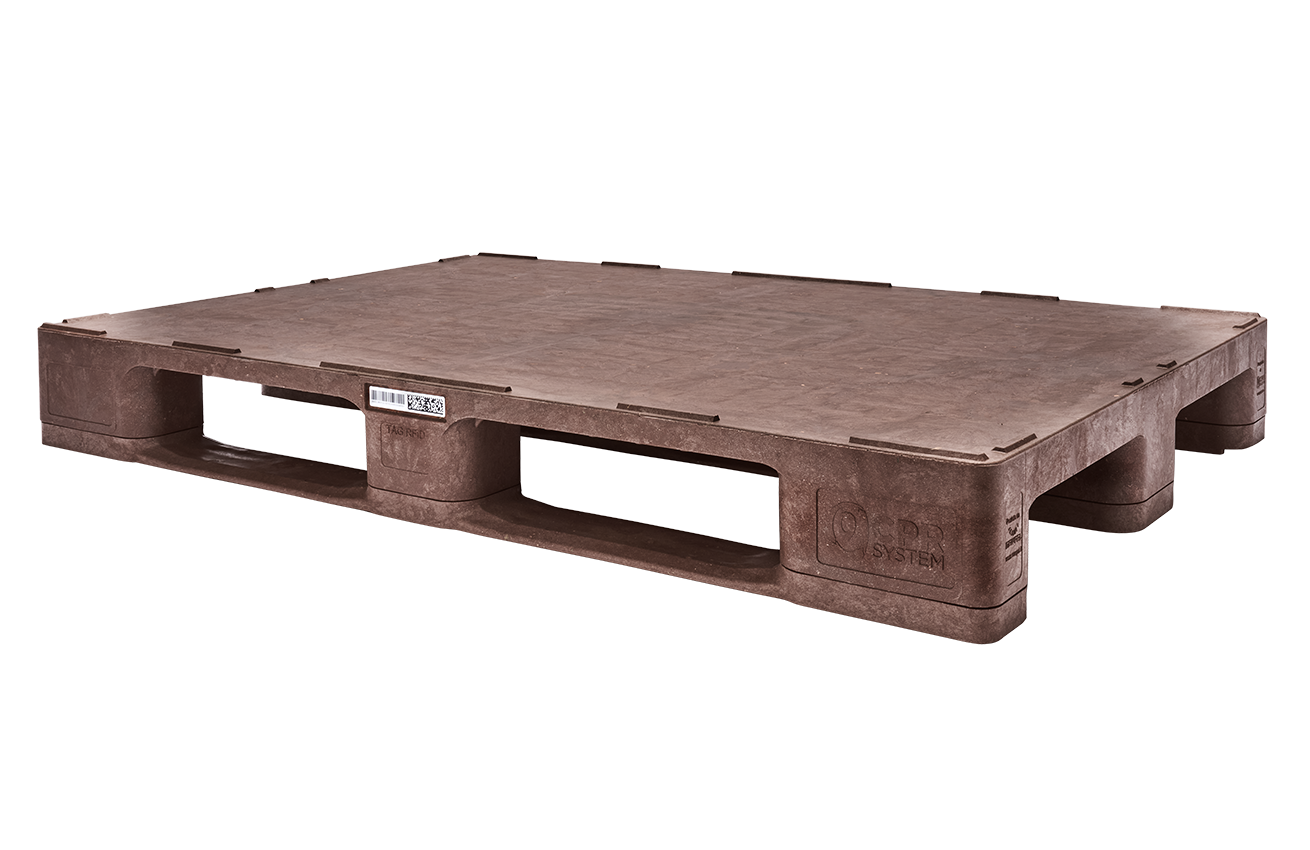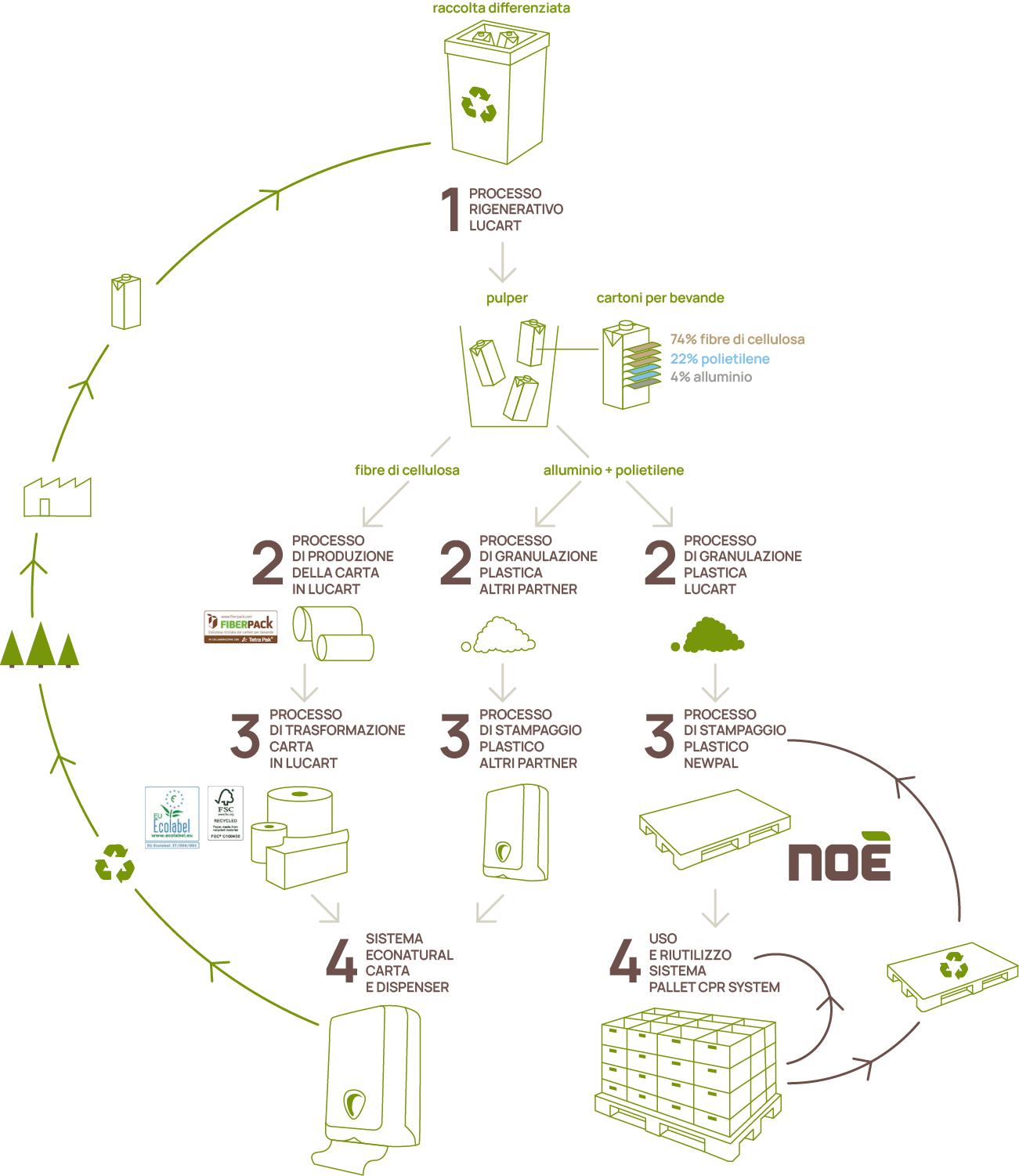“We are faced with a unique process innovation and business model. We have finally closed the circle of recycling beverage cartons, creating, with recovered materials, high-quality products with extraordinary performance, both for paper products and for the new recycled plastic pallets” (May 2023)
- Contribute to always return more sustainable logistics in the agrifood sector.
- Develop a project of commercial enhancement of PolyAl, a material composed of plastic and aluminum that you get, Along with the paper, from the recycling of Tetra Pak®.
The Noè Pallet is a pallet created with raw and second materials, in compliance with the UNI 10667-16 standard, deriving from post-consumer processing
of the polylaminate used for Tetra Pak® type beverage cartons. He holds a patent for industrial invention.
The recycling process of Tetra Pak® type beverage cartons makes it possible to recover the cellulose component (used for the production of recycled paper), separating it from the polyethylene and aluminum (PolyAl) What are they coming transformed into granules (GranPlast) for the production of pallets.
The 3,000sqm pallet production plant uses a low-pressure injection molding process, using the innovative machine an innovative Roteax GMJ101 machine, and has the capacity to produce up to 250,000 polyAl-based pallets per year, of which 70% is recycled.
Each pallet has a 5-year warranty with 5 year rotations.
Pallet data sheet:
- Dimensions: 80x120x15 H cm
- Weight: 23 kg +/-5
- Max working load: 2,000 kg (for intact pallets, with a stable and evenly distributed load, with operating temperature between 5°C and 35°C)
- C/LDPE 90 environmental labeling, recycled material content greater than 95%
- Recyclable at end of life
- Easily washable and sanitizable, rust-resistant, insensitive to changes in weight in contact with water
- Equipped with containment edges and technical measures to limit the slip of the load consisting of the CPR plastic boxes.
- Smart Label traceability labeling with RFID TAG, EAN128 Bar code and Data Matrix








